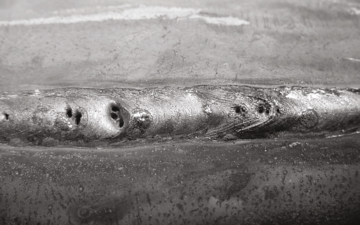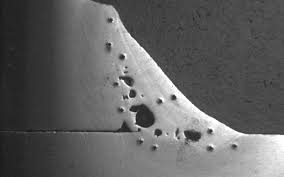What is Porosity in Welding: Necessary Tips for Getting Flawless Welds
Recognizing Porosity in Welding: Exploring Reasons, Results, and Avoidance Techniques
As experts in the welding market are well mindful, comprehending the causes, results, and prevention techniques connected to porosity is essential for accomplishing durable and reliable welds. By diving into the origin creates of porosity, examining its destructive effects on weld high quality, and checking out effective prevention approaches, welders can enhance their understanding and abilities to produce top quality welds continually.
Common Root Causes Of Porosity
Contamination, in the type of dust, grease, or rust on the welding surface, creates gas pockets when heated, leading to porosity in the weld. Inappropriate securing occurs when the shielding gas, frequently utilized in processes like MIG and TIG welding, is not able to totally safeguard the molten weld swimming pool from reacting with the bordering air, resulting in gas entrapment and succeeding porosity. Furthermore, poor gas insurance coverage, frequently due to wrong circulation prices or nozzle positioning, can leave components of the weld unguarded, enabling porosity to develop.
Impacts on Weld Top Quality
The presence of porosity in a weld can substantially jeopardize the general quality and honesty of the welded joint. Porosity within a weld produces spaces or tooth cavities that damage the framework, making it more at risk to breaking, corrosion, and mechanical failure.
Moreover, porosity can prevent the effectiveness of non-destructive testing (NDT) strategies, making it challenging to spot other flaws or discontinuities within the weld. This can result in considerable safety issues, especially in critical applications where the architectural integrity of the welded elements is vital.

Prevention Techniques Overview
Offered the harmful influence of porosity on weld high quality, efficient prevention methods are vital to keeping the architectural honesty of bonded joints. One of the primary avoidance methods is thorough cleansing of the base materials before welding. Pollutants such as oil, grease, corrosion, and moisture can add to porosity, so guaranteeing a tidy work surface area is vital. Proper storage of welding consumables in completely dry conditions is likewise important to avoid wetness absorption, which can result in gas entrapment during welding. Additionally, choosing the appropriate welding parameters, such as voltage, current, and take a trip rate, can assist decrease the danger of porosity development. Guaranteeing appropriate shielding gas circulation and insurance coverage is an additional essential prevention strategy, as insufficient gas protection can lead to redirected here atmospheric contamination and porosity. Appropriate welder training and certification are crucial for carrying out preventive steps properly and regularly. By including these prevention techniques right into welding techniques, click site the incident of porosity can be considerably minimized, bring about stronger and extra trusted welded joints.
Importance of Appropriate Shielding
Proper shielding in welding plays a crucial function in preventing atmospheric contamination and making sure the integrity of bonded joints. Securing gases, such as argon, helium, or a combination of both, are frequently used to secure the weld swimming pool from responding with elements airborne like oxygen and nitrogen. When these reactive elements come into call with the warm weld swimming pool, they can trigger porosity, leading to weak welds with minimized mechanical residential or commercial properties.

Inadequate protecting can cause different defects like porosity, spatter, and oxidation, endangering the structural stability of the bonded joint. Adhering to appropriate shielding techniques is necessary to generate top notch welds with minimal defects and make certain the long life and dependability of the bonded components.
Monitoring and Control Techniques
How can welders successfully keep track of and control the welding procedure to guarantee optimum outcomes and stop flaws like porosity? By continually monitoring these variables, welders can determine variances from the suitable problems and make instant modifications to stop porosity formation.

Furthermore, applying appropriate training programs for welders is essential for keeping an eye on and regulating the welding procedure effectively. What is Porosity. Informing welders on the relevance of preserving regular parameters, such as proper gas shielding and travel speed, can assist avoid porosity issues. Regular analyses and certifications can likewise make certain that welders are skillful in surveillance and regulating welding procedures
Additionally, making use of automated welding systems can enhance monitoring and control abilities. These systems can exactly control welding criteria, minimizing the probability check it out of human error and ensuring consistent weld quality. By integrating advanced surveillance modern technologies, training programs, and automated systems, welders can properly keep track of and regulate the welding procedure to minimize porosity problems and attain high-quality welds.
Conclusion
